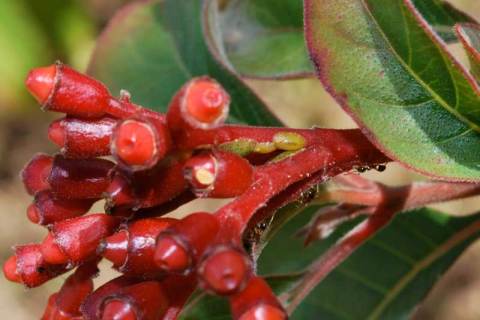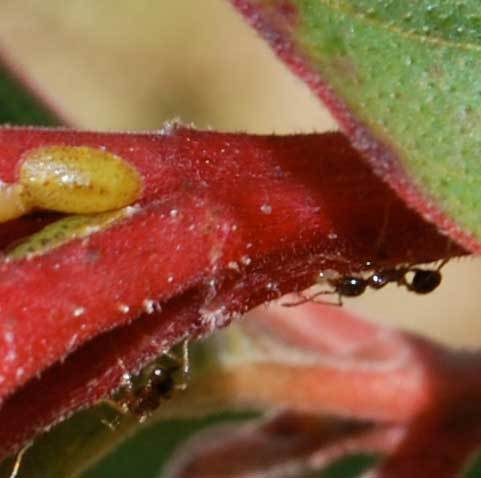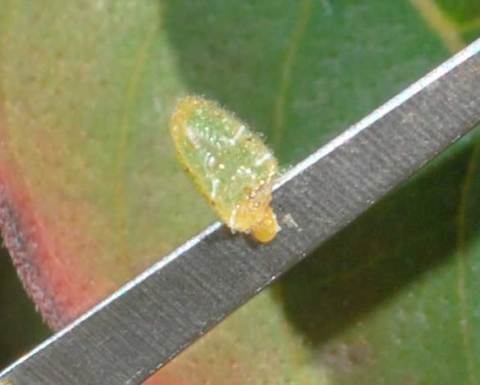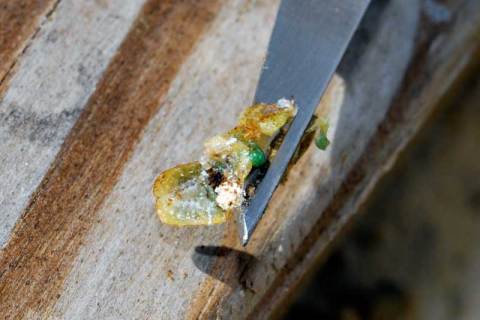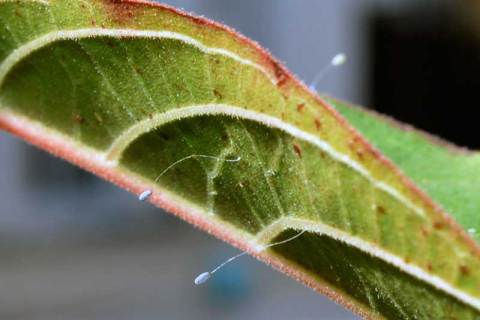Well, if there was any doubt about why every time I removed some of the scale insects from my plants I encountered a bunch of ants, it should be cleared up now. It turns out that the ants (order Hymenoptera) really are tending the scale bugs (true bugs, usually grouped in the order Hemiptera), just like ranchers tend a herd of sheep or cattle. This morning’s garden session included some scale scraping and, at long last, some documentary evidence of this interaction between different insect orders taking place in my own backyard.
My typical scale-control session begins with a visual inspection of the plant. In this case, you see a few scale insects (they look a bit like Green Scale, Coccus viridis, or Soft Brown Scale, Coccus hesperidum) and a few ants:
If you look closely, though, you can see that the ant on the far right appears to be tending one of the scales; either the insect itself or a drop of its “crop,” the honeydew excreted from the legless insect’s anus. If I had a better macro lens (hint hint), I could probably get a clearer picture and see whether we’re dealing with an organism or its by-product.
Clearly, though, whether honeydew or scale itself, the ants are exploiting the presence of these insects as important elements in their daily life.
Once you see these herbivorous hungry hippos on the plant, it’s hard for the gardener to resist scraping them off. Here’s what a relatively undamaged one looks like on the business side:
Just like with potato chips, though, no gardener thinning a herd of scale insects can stop with just one. Here’s my trusty Leatherman with a few more former pests coating it:
As usual, I scouted for a few insect equivalents of wolves that might help control the size of the scale insect herd; I found a few, but not in the numbers I’d hoped for:
The problem with relying on predators like ladybeetles or lacewing larvae is that the ant cowboys ride herd pretty closely on their charges; they will defend this resource to the death, and they have the advantage in numbers over their adversaries. Over the past few days, I’ve discovered that I’m able to keep the scale numbers down somewhat, but I’ve yet to head out and find a scale-free plant. So I really do have to hope that the garden ecology will swing into gear, here. After all, one of the reasons to garden with native plants is to create more functioning native ecological habitat for Florida’s migratory and resident birds and insects.

